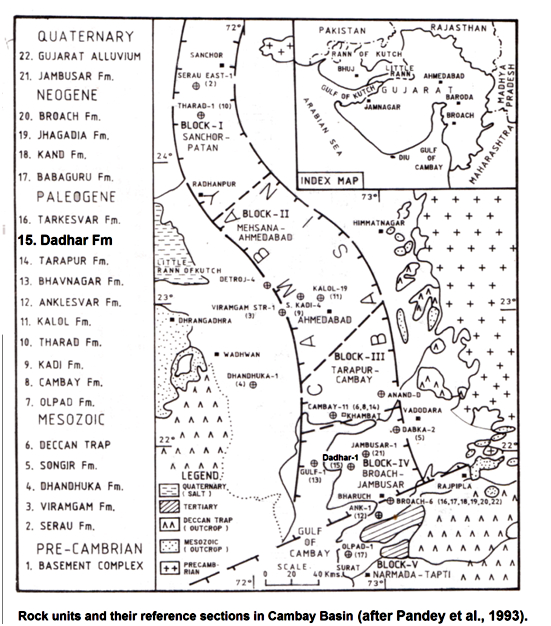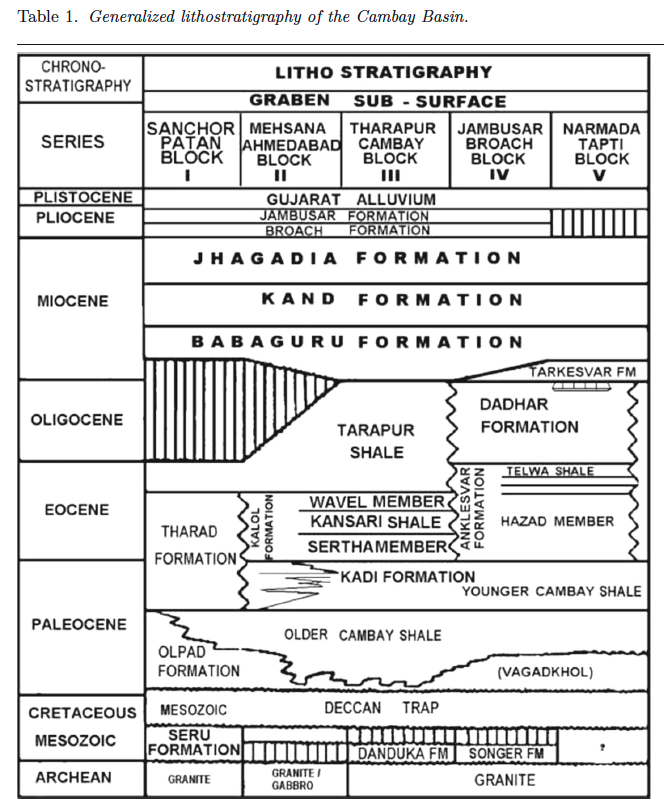Dadhar Fm
Type Locality and Naming
SUBSURFACE: Well Dadhar-1 (depth interval 2173-2381 m), 208 m thickness. [Original Publication: Rao, K.L.N. (1969) Lithostratigraphy of the Paleogene succession of southern Cambay Basin, ONGC Bull, vol 6 (1), pp. 24-37]. Reference well: i) Dahej-1 (depth interval 2261 – 2445 m); ii) Ankaleswar-1 (depth interval 665 – 800 m), In Dahej-1 the thickness is 184 m while in Ankaleswar-1 the thickness is 135 m.
Lithology and Thickness
Clayey sandstone. In type section, it consists of thin, soft sandstone with finely bedded shale alternations. Maximum thickness is 211 m in type section.
[Figure 1: Rock units and their reference sections in Cambay Basin (after Pandey et al., 1993)]
[Figure 2: Generalized stratigraphy of the Cambay Basin. (from Jaiswal and Bhattacharya, 2018, J.EarthSyst.Sci., 127:65)]
Relationships and Distribution
Lower contact
Unconformably underlain by the Ankaleswar Fm.
Upper contact
Unconformably overlain by the Tarkeswar Fm.
Regional extent
Rao (1969) observed that the formation is thick and markedly developed in the area to the south of Mahisagar river. According to Sudhakar and Basu (1973), however, Dadhar Formation occupies an extensive area between Anklesvar in the north to Surat in the south.
Coeval with Tarapur Fm shale in the north.
GeoJSON
Fossils
Baculogypsinoides tetrandra, Nummulites fabianii, N. beaumonti, N. fichteli, N. retiatus, Pellastispira sp., Discocyclina sp., , Operculna sp., Rotalia sp., and gastropods.
Age
Depositional setting
Additional Information

